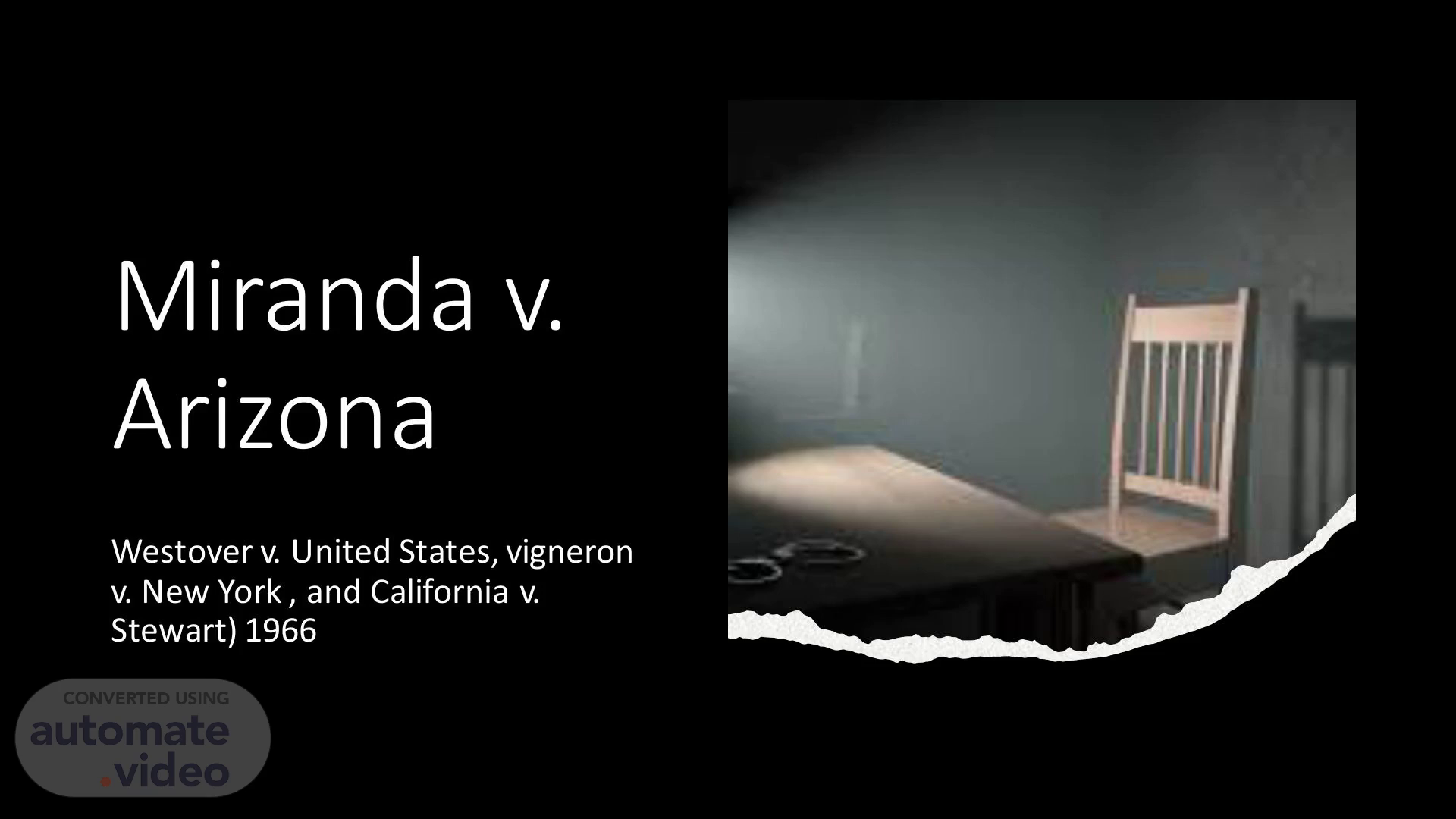
Page 1 (0s)
Miranda v. Arizona Westover v. United States, vigneron v. New York , and California v. Stewart) 1966.
Page 2 (9s)
• Ernesto Miranda, a Mexican immigrant living in Phoenix, Arizona, was identified in a police lineup by a woman, who accused him of kidnapping and raping her. Miranda was arrested and questioned by the police for two hours until he confessed to the crimes. During the interrogation, police did not tell Miranda about his Fifth Amendment protection against self- incrimination or his Sixth Amendment right to an attorney..
Page 3 (29s)
How does did case get to the Supreme Court ? • Miranda's attorney appealed to the Arizona Supreme Court, which upheld the conviction. Then he appealed to the United States Supreme Court, which agreed to hear it along with four similar cases..
Page 4 (43s)
What is a “landmark” decision ?/ HOW DOES THE COURT REACH ITS DECISION ? • Establishes a significant new legal principle or concept or otherwise changing interpretation of an existing law. • The decision: Supreme Court decision Miranda v. Arizona (1966) ruled that an arrested individual is entitled to rights against self-incrimination and to an attorney under the 5th and 6th Amendments of the United States Constitution How did the Supreme Court ruling affect existing and future laws and procedures? The Supreme Court ruled differently on June 13, 1966. It held that presenting Miranda’s confession as evidence violated his constitutional rights under the 5th and 6th Amendments. The 5th Amendment protects from self-incrimination and requires the police to inform the detainee about his or her rights while the 6th guarantees criminal suspects rights to a personal or state issued attorney.
Page 5 (1m 17s)
Outcome • a landmark decision of the Warren court's rulings on criminal justice—he ruled that the police, before questioning criminal suspects, must inform them of their rights to remain silent and to have counsel present.